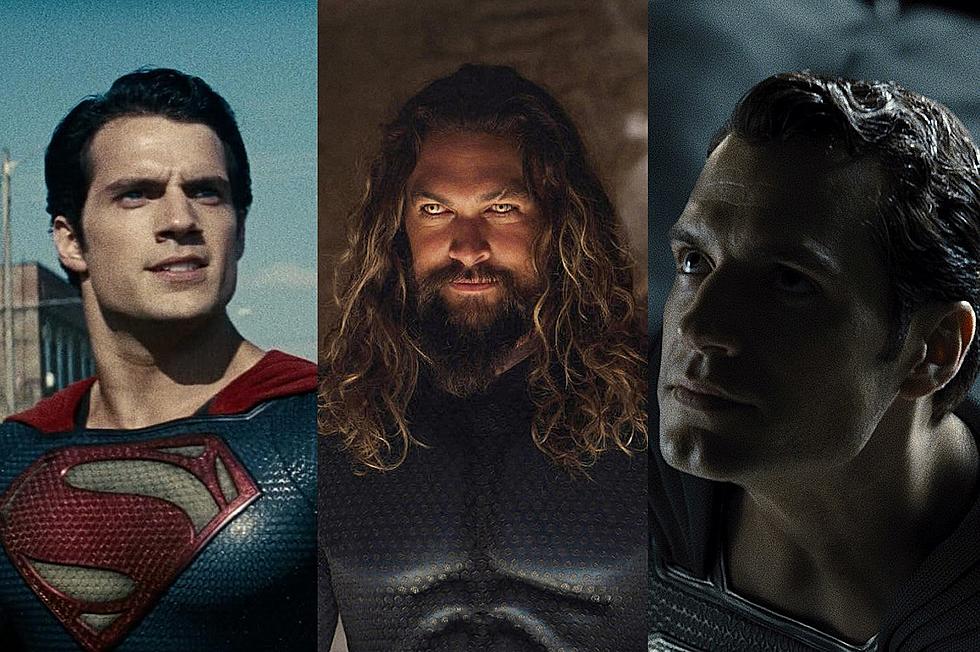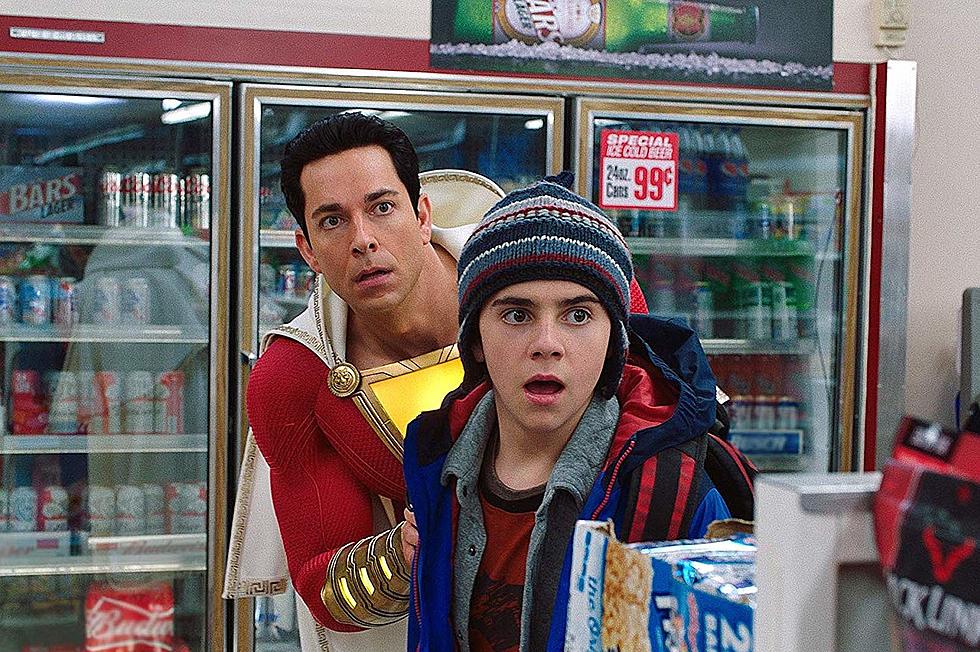
The Complete History of Comic-Book Movies, Chapter 1: ‘Adventures of Captain Marvel’
The number one movie of last year was based on a comic book. The year before, two of the top five movies were based on comics. The year before that, both of the two top movies of the year were inspired by comics; both went on to make more than $1 billion worldwide and are now among the top 15 highest-grossing movies in history. Next year, no less than ten (10) movies based on comic books will open in theaters. Blessed are the geeks, for they have inherited the earth, at least as far as Hollywood is concerned.
There was a time, not that long ago, when comic books were a niche subculture. Today, that niche subculture has completely conquered the mainstream. After decades in the shadows, comics are now the profit engines of billion-dollar film and television companies. When I was a kid in the 1980s, you were lucky to get one comic-book movie every year or two; you were even luckier if it was not a total and utter embarrassment. In 2016, there will be a comic-book movie almost every month. To a comic fan in his thirties or older, it can sometimes feel like they’ve stepped onto the Flash’s Cosmic Treadmill, and run themselves into an alternate reality.
This Bizarro World is a long way from the 1940s, when comic-book superheroes first transitioned to the big-screen as the subjects of serials. These series of episodic shorts were often cheaply made and sometimes shockingly unfaithful to their source material. Comics were ahead of their time, at least at the movie theater; too adventurous and imaginative to be accurately reproduced with the tools of the day. As technology improved, so did the comic-book movies, leading to a series of watershed films—‘Superman,’ ‘Batman,’ ‘X-Men’—that reshaped the entire industry. How did we get there? All superheroes have an origin story. So do comic-book movies. This column will attempt to find it, one film at a time.
First, though, some guidelines. This column will focus exclusively on comic-book movies. That means movies based on characters from comic strips (like ‘Dick Tracy’ or ‘Popeye’) or pulps (like ‘The Phantom’ or ‘The Shadow’) or superheroes who were invented expressly for films are out (sorry ‘Blankman’). At least at first, we’re going to limit ourselves to American comics and movies, while also excluding anything that debuted on television or went direct-to-video; those categories are each so large in and of themselves they could (and maybe will) be their own columns someday. But that means for the time being you won’t see pieces on ‘Danger: Diabolik,’ David Hasslehoff’s ‘Nick Fury: Agent of S.H.I.E.L.D.,’ or that weird ‘Man-Thing’ movie from ten years ago that no one saw. Try to contain your anguish.
And now let’s begin, with the very first comic book to cross over to the film world. Dozens of movies, billions of dollars, decades of dreams, all start here, with a single magic word.
‘Adventures of Captain Marvel’ (1941)
Director: William Witney and John English
Writers: Ronald Davidson, Norman S. Hall, Arch B. Heath, Joseph Poland, Sol Shor
Starring: Tom Tyler, Frank Coghlan Jr., Louise Currie
Based on: Captain Marvel, created by Bill Parker and C.C. Beck in ‘Whiz Comics’ #2 (1939)
Onscreen Iteration: First appearance
Best Special Effect: Anytime Captain Marvel stops bullets with his chest.
Worst Special Effect: Anytime Captain Marvel flies in front of a greenscreen.
Most Dated Moment: The description of one of the serial’s key settings—a valuable tomb in Thailand—as “a desolate volcanic land which has for centuries been taboo to white men ... a realm of mystery, jealously guarded by native tribes unconquered since the dawn of time.” All of the “natives” who live around the tomb dress like extras from a summer stock version of ‘Arabian Nights.’
Most Timeless Moment: While on the hunt for his main squeeze, Betty Wallace, Captain Marvel beats up and interrogates one of his arch-nemesis’ goons. After the thug gives Cap the info he needs, he slaps the guy and heads off in search of his lady. Seeing an opportunity, the goon pulls out a pistol and fires at Captain Marvel—but Captain Marvel is impervious to bullets, so it does nothing. Though the hood presents absolutely no danger to him whatsoever, Captain Marvel stops, turns, runs back, and punches him right in the face. So remember, folks: DO NOT MESS WITH CAPTAIN MARVEL. HE WILL BEAT THE CRAP OUT OF YOU.
Further Thoughts: Modern fans might assume the first comic-book superhero to get the movie treatment would have been Superman or Batman. In fact, one of their biggest rivals throughout the 1940s beat both of them to the screen by several years. According to Wikipedia (which is never wrong), Republic Pictures did try to make a Superman serial first, but National Periodicals (which later became DC Comics) turned them down. The studio then approached Fawcett Comics, publishers of Captain Marvel, who was introduced shortly after the Man of Steel and quickly became one of the Golden Age’s most popular heroes. For much of the 1940s, “The Big Red Cheese” was the top-selling book in the entire comics industry.
The concept that kids flocked to was simple. Orphaned 12-year-old newsboy Billy Batson is selected by a wizard named Shazam to replace him as Earth’s protector. When Billy says the Wizard’s name—an acronym of the assorted gods and heroes who were the source of his power (Solomon’s wisdom, Hercules’ strength, Atlas’ stamina, Zeus’ power, Achilles’ courage, and Mercury’s speed)—he’s transformed by a magic bolt of lightning into Captain Marvel.
The movie version is faithful to the comics ... ish. In a cave somewhere in Thailand, a Billy Batson who looks to be somewhere in his mid-to-late 20s (Frank Coghlan Jr.) is granted the powers of Captain Marvel (Tom Tyler) by the old Wizard (Nigel De Brulier). This Billy works as the radio operator for an expedition into “The Valley of Tombs,” where a bunch of American archaeologists break into an ancient tomb over the objections of the local natives. While Billy finds Shazam and gets his superhero identity, the explorers discover “The Scorpion,” a bug-shaped device that functions as a “solar atom smasher,” concentrating the sun’s rays through a series of lenses into a powerful beam that can destroy human life or turn ordinary objects into gold.
The Scorpion, which is placed in a heavily fortified tomb, is one of the local culture’s most sacred objects, so naturally, the white archaeologists just take it for themselves. That draws the ire of a mysterious evildoer also named “The Scorpion,” who is technically the serial’s villain, but seems to have a legitimate gripe about the ownership of this thing. He sets out to reclaim the atom smasher, while the archaeologists divide its many lenses amongst themselves in order to protect it; over the course of the 12 chapters, the Scorpion sends his henchman to retrieve each crucial piece while Billy and Captain Marvel try to thwart his progress.
Serials like ‘Adventures of Captain Marvel’ were originally programmed to run in weekly installments at theaters around the country. They weren’t meant to be watched in one sitting—and frankly it shows. The episodes all rely on a handful of tropes (chase scenes, fist fights, cliffhangers) that begin to get awful repetitive over the course of more than three hours of action. If you’re going to watch ‘Captain Marvel,’ your best bet is to do it the way it was intended; in small chunks before other feature presentations. That’ll keep things from getting too stale, and let you bask in the film’s pleasures in smaller, more manageable doses.
Those pleasures are mostly of the two-fisted action variety. ‘Captain Marvel’ was directed by John English and William Witney, who were well-known in their day for their thrilling, stunt-laden serials. This one is no different, and even on a relatively limited budget (and with some bargain basement special effects) they do a very respectable job of conjuring Captain Marvel to life. Some of the stunts are dodgy, but a lot of them still work, like Captain Marvel bursting through walls like they were made out of cardboard (probably because they were made out of cardboard) or breaking rifles over his knee like they’re made out of wax (probably because they were made out of wax). And the fight scenes, which rely on the actors’ and their doubles’ athleticism instead of frenetic editing and shaky camerawork, are fantastic. The centerpiece battle in Chapter 10 between Billy Batson and the Scorpion’s goons, for example, is more fun than anything in ‘Taken 3.’ And there’s at least half a dozen more fights just like it.
There’s less to recommend about the story itself, which is mostly about Billy trying to track down the true identity of the Scorpion. Before too long, he realizes the Scorpion is actually one of the archeologists attempting to subvert the group from within, but he guesses incorrectly several times before the real bad guy reveals himself in the final chapter. (And this guy’s supposed to have the “wisdom” of Solomon? Yeah, no.) There are no clues or any real sense of mystery; it’s mostly just a process-of-elimination guessing game. Again, part of this is the nature of the beast; a serial is meant to be so simple that each chapter can be understood on in its own, in case a viewer happened to catch, say, Chapter 3, at the theater without seeing the first two.
It’s easy to see why Republic wanted comic-book heroes for their serials; they’re well-suited to the format. Not only were comics loaded with the sort of action and intrigue that were the serials’ bread-and-butter, but the construct of a hero and his secret identity also served as an effective cost-cutting measure. Most of the film could follow the human alter ego sleuthing or romancing his leading lady, while reserving his costumed personality (and much of the budget) for just a couple of minutes of excitement in each episode. Billy’s frequent changes back and forth from Captain Marvel strain credulity a few times—Why’s this dope drive everywhere when he could just fly as Cap with the speed of Mercury and be there in a flash?—but it surely helped make things more affordable.
When ‘Adventures of Captain Marvel’ was made in 1940, the rules of of comic-book movies hadn’t been established yet; heck in 1940, most of the rules of comic books themselves hadn’t been established yet. Characters onscreen are weirdly unfazed by the appearance of a man in red tights and a cape flying through the air, and Captain Marvel himself is shockingly violent; in the very first episode he kills a whole bunch of bad guys by commandeering their Gatling gun and then mowing them down as they run for their lives. Shooting dudes in the back in cold blood? This is a long way from “family-friendly entertainment.”
But even at this primordial stage, there’s a lot that’s recognizable about modern comic-book movies in ‘Adventures of Captain Marvel.’ Although the serial format itself is a thing of the past, the idea of hooking viewers on a cliffhanger so they’ll keep coming back to the theater—and the idea of selling viewers the perpetual middle of a story they may never see end—hasn’t changed in 70 years. Captain Marvel hasn’t changed much in that time either, although he now goes by Shazam (Thanks, Marvel Comics!), and he’s owned by his former rivals at DC. For the first time since 1940, he’s headed back to the big-screen as well, in a 2019 movie that will star Dwayne “The Rock” Johnson as the hero’s nemesis Black Adam. But that story, like all comics stories, is very much to be continued...
‘The Adventures of Captain Marvel’ is currently available on YouTube and at Archive.org.
More From ScreenCrush









